- Incredibly futuristic design inside and out
- All-new, rear wheel drive platform
- Fast charging capabilities
- Not cheap to buy
- Ride isn't the most comfortable
- Boot space is below expectations
We’re big fans of Hyundai here at DiscoverAuto. The Korean brand has come leaps and bounds since the days of its bargain Excel and is on fire, offering brilliant products across its entire lineup. The i30 is a great small car offering, especially the N variants, while the new Tucson and Santa Fe are excellent SUVs. The 2022 Hyundai Ioniq 5 is the brand’s next chapter and proves Hyundai is now a market leader in the ever-growing segment of electric vehicles.
The Ioniq 5 is a game-changer for Hyundai. Unlike the Kona EV SUV and the Ioniq EV sedan, the Ioniq 5 is first of many dedicated EVs using the Hyundai Motor Group’s state of the art Electric Global Modular Platform, or E-GMP. Everything in the Ioniq 5 is brand new. Where the Kona EV made do with swapping the regular Kona’s petrol engine for an electric motor, with some batteries plonked under the floor, the Ioniq 5 was designed only with electric power in mind and shows what the Korean automotive giant has in store for us.
Ever since we laid eyes on the Ioniq 5, we knew it would be something special. Sadly, Hyundai Australia has been forced to limit supply of the Ioniq 5 to an initial batch of 400 cars coming from South Korea over 2022. In an unprecedented move, Hyundai Australia decided to sell the Ioniq 5 directly to consumers, bypassing dealerships. All 400 have now been sold.
The 2022 Hyundai Ioniq 5 is definitely the most memorable car we reviewed in a long time. Not only does it turn heads everywhere you go with its incredibly distinctive design (get ready to answer questions each time you park it), but it also offers a glimpse into the future. This is a proper EV, one which takes the fight directly to Tesla and proves Hyundai is a worthy adversary in the EV space. The Ioniq 5 might not perfect however, with a few flaws as we discovered, but there is no denying the gravity of what Hyundai has managed to pull off.
Price & Specs: 8.0/10
There’s no need to go to a dealership to buy an Ioniq 5. Hyundai will sell you one directly, online. At launch, Hyundai highly opted to offer two specifications of the Ioniq 5 for punters, with both versions of the Ioniq 5 featuring an identical level of equipment and a 72.6kW/h battery pack. The differences lie in the number of electric motors each has which changes power output and range.
The entry level Ioniq 5 RWD we tested here comes in a $71,900 before on-road costs while the Ioniq 5 AWD costs $75,900 before on-roads.
In NSW and Victoria, the Ioniq 5 RWD will cost around $76,000 drive-away before any government incentives. It comes with a single electric motor mounted at the rear, which produces 160kW of power and 350Nm of torque. Hyundai claims the Ioniq 5 RWD will have a range of 451km.
When it comes to standard equipment, Hyundai has loaded the Ioniq 5 with everything it could find in the parts bin to ease the higher purchase price of an EV. The standard feature list is impressive with a large panoramic (non-opening) glass roof, large 20-inch ‘fractal’ aero wheels, automatic all-LED lighting, a full leather interior which uses organic and sustainable materials, a 3D Surround View camera, a Bose Audio system, front seats which offer a recliner setting plus plus heating/ventilation, heated rear seats, a heated steering wheel, and LED interior lighting.
The Ioniq 5 offers class leading 800V charging speeds and will be able to gobble up electrons faster than most EVs on sale currently. What a shame that Australia’s infrastructure is yet to keep up with offering chargers which can match the Ioniq 5’s impressive charging architecture.
The Ioniq 5 also has a Vehicle to Load (V2L) feature, which allows the car to charge other devices with 3.6kW of power. We can already see how perfect this feature would be on a camping trip where the Hyundai’s large battery could be used to power a large fridge or even a portable air conditioner.
Hyundai has offered our market six colour options. All are free of charge except the matte colours, which cost $1000 more. Buyers can chose from white, grey, black, teal-green, blue, and gold. Interior colours include obsidian black, dark pebble grey, or dark teal.
Safety equipment includes adaptive cruise control with stop/go functionality, automatic high-beam, intelligent speed limit assist, lane-keep assist, lane following assist, rear occupant alert, parking collision mitigation assistance, rear cross-traffic assist, safe exit assist, driver attention warning and seven airbags, including a front-centre airbag between the driver and passenger. The Ioniq 5 was just awarded a 5-star Euro NCAP rating.
Competitors include the Tesla Model 3, which offers improved range across its lineup than the Ioniq 5. Even the base Tesla Model 3 costing around $60,000, offers 490km of range versus the Ioniq 5’s 451km. The Ioniq however does counter with higher levels of standard equipment, such as heated and ventilated seats and has a full leather interior, unlike the Tesla.
The Model 3 Dual Motor Long Range is priced from $73,400 plus on-road costs and is close to the Ioniq 5 RWD’s asking price. It offers much more range at 614km and accelerates to 100km/h from rest in just 4.4 seconds.
Performance & Range: 8.5/10
The 2022 Hyundai Ioniq 5 RWD we tested came with a single-motor, rear-wheel drive drivetrain producing 160kW of power and 350Nm of torque powered by a large 72.6kWh lithium-ion battery.
Hyundai claims the Ioniq 5 RWD will do the 0-100km/h sprint in 7.4 seconds. We think this is rather accurate, with the Ioniq 5 RWD always feeling adequately sprightly. It surges off the line before acceleration tapers off closer to 100km/h. Those not familiar with EVs will marvel at the relative silence of the electric motor, and the intant torque and response it provides. The Ioniq 5 feels like a much faster car than it actually is.
Hyundai says the Ioniq 5 RWD has a claimed range of 451km on the WLTP standard in, using 17.9kWh per 100km in a mix of urban and freeway driving. We managed to roughly match this claimed figure around town, where during braking the battery is charged. The one-pedal driving mode – called ‘i-Pedal’ – was particularly well tuned and allowed us to drove the Ioniq 5 with very rarely touching the brake pedal. Lifting off the accelerator will enable maximum regenerative braking without engaging the friction brakes. Doing so will boost the Ioniq 5’s range around town, easily allowing for a range of around 400km.
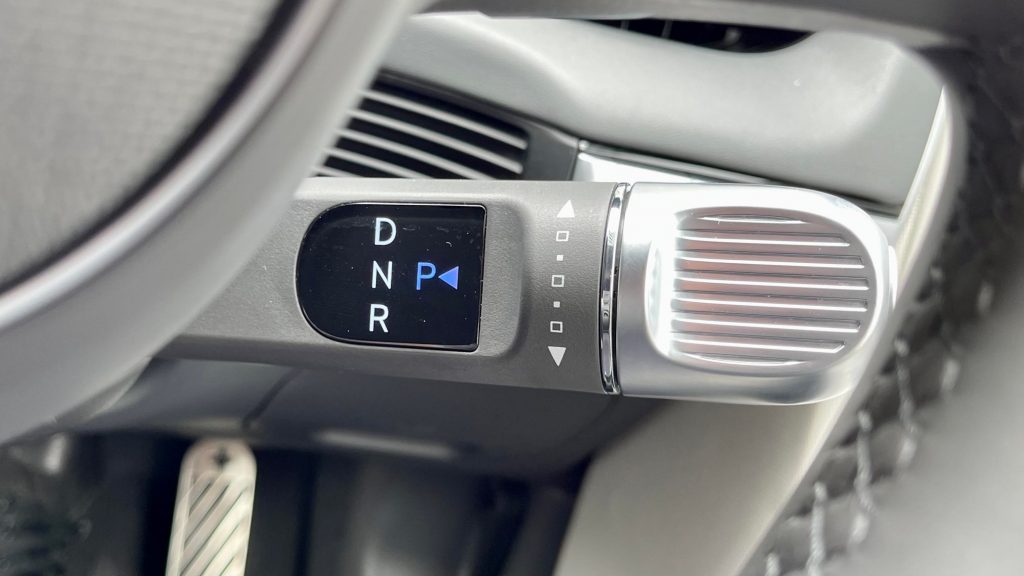
We noticed that the efficiency did fall at higher speeds. Over 100km/h the Ioniq 5 RWD would struggle to keep its consumption under 20kW/100km, which highlights the Ioniq 5’s relatively poor aerodynamics for an EV. The car’s drag coefficient (a good indicator of how slippery a car is through the air) is 0.288, which is worse than a petrol-powered Volkswagen Golf. This is rather poor, considering the Ioniq 5 has folding door handles, a fully flat underbody and an active front grille, which only opens for cooling when needed. Blame the edgy, angular design.
This leads to slightly disappointing range when venturing out of town. Cranking the air conditioning will further kill range. A stint from inner Melbourne down the Mornington Peninsula on a hot day saw our consumption hit 22kWh.
Charging is one of the Ioniq 5’s strong points. It uses the now ubiquitous Type 2 charge point and it can funnel up to 10.5kW with three-phase AC power, meaning it will hit a full charge from 0 in just under 7 hours.
Charging using the emergency cable from a regular powerpoint at my home yielded only 1.3kW charging, meaning it would take over 55 hours to charge the Ioniq 5 from 0 to 100% if you only had access to a household three pin socket.
Visiting a 350kW DC ultra-rapid charger (there’s now one in most capital cities with more planned) will charge the Ioniq 5 extremely quickly. A 10 to 80 per cent charge will only take 17 minutes, and each kWh will set you back around 40 cents.
Ride & Handling: 7.5/10
The key benefit of Hyundai using its all-new e-GMP platform for the Ioniq 5 is that the car is free from the shackles of using a body which was engineered for an internal combustion engine. This allows the Ioniq 5 to have a low centre of gravity, better battery capacity, better safety and, in a nod to enthusiasts, rear-wheel drive.
The ride quality is acceptable around town and we commend Hyundai for opting for a single damper setting – no fancy adaptive dampers here. Our main issue with the Ioniq 5 RWD’s driving experience was how the ride felt a tad wooden around town, with vibrations from even small bumps reverberating around the cabin for quite a long time. The Ioniq 5 was never uncomfortable by any stretch of the imagination, but it’s clear Hyundai, just like many other EV manufacturers need to work a lot harder to make EVs better to ride in. Most models, even the excellent Tesla Model 3 feel firmer than they ought to be.
Large 20-inch alloys, shod in wide 255 tyres, a low ride height (for an SUV) along with a 2,020kg kerb weight do not bode well for a good ride and the Ioniq 5 RWD does its best considering the physics card its been dealt with. At speed, the Ioniq 5’s cabin is impressively insulated and hushed thanks to triple door seals and double layered acoustic glass for all the car’s windows.
Show the Ioniq 5 some corners and it behaves like a much smaller car. Body control might not be up to scratch when you hit a bump mid corner, but the level of handling talent is decent. The steering feels engaging and through corners, the Ioniq 5 grips well. The Michelin Pilot Sport EV tyres fitted as standard are nothing short of an engineering marvel. Turning over 2000kg of EV mass is no easy feat, and these tyres give the Ioniq 5 incredible amounts of grip and composure. Unlike the Kona EV, which overwhelms its front tyres the second the driver plants their foot down, the Ioniq 5 feels much more natural with a solid push from the rear wheels. Getting on the power mid-corner will have the Ioniq 5’s rear stepping out before the excellent stability control system prevents anything dangerous.
The Ioniq 5’s visibility is excellent, with large windows and crystal sharp cameras. Hyundai’s excellent blind-spot viewing system should be the model for other manufacturers. It shows the Ioniq 5’s blindspots on the driver’s display super clearly. Other cool camera tricks include a moveable and customisable 360 degree camera view.
Interior & Practicality: 8.0/10
The interior of the 2022 Hyundai Ioniq 5 has the aura and quality of a Genesis product. It feels rather premium inside, even if it doesn’t match the level of say, a Genesis G80. Even if the Ioniq 5 wasn’t an electric car, its standard features, fit and finish all feel worthy of its almost $80,000 asking price.
The interior is dominated by the dual 12.3-inch digital displays up front and a futuristic design. The central screen is slick and feel modern, even if the software has some occasional glitches and hangs from time to time. There’s a dedicated EV screen showing range, battery status and neat information such as the nearest charging location, as well as how much range is being eaten up by the air conditioning. The central screen also has wired Android Auto and Apple CarPlay and features a ledge underneath it to rest your hand while driving.
The driver cluster is clear and legible, but it offers no customisability at all. Oddly, no matter how you adjust your driving position the top corners of the screen are always obscured by the Ioniq 5’s steering wheel.
The separate panel underneath the main central screen controls the bulk of the climate controls in the Ioniq 5. Annoyingly, operating the heated and ventilated seats means going into the heating and cooling menu and prodding away. We aren’t fans of operating climate controls through touchscreens, but the Ioniq 5 does alright with having a dedicate climate control panel, with only some features hidden away.
Space and comfort in the Ioniq 5 are also excellent. The dedicated EV platform gives the Ioniq 5 a super long wheelbase to rival large german executive cars. In a word, the interior is vast, bigger than even Hyundai’s largest car the Palisade. This means there is plenty of room to stretch out inside, no matter where you’re sitting, while the driver and front passenger seats are actually fully reclining seats, complete with a leg rest. They’re meant to give you a perfect position to rest while your Ioniq 5 charges – just press the dedicated button twice and it does it for you.
Even glovebox is a large bin that slides out of the dash and can fit a small laptop. As a lot of the electronics usually found behind the dash have now moved to under the bonnet, the dashboard’s petite size has liberated even more space inside. The flat floor inside means Hyundai has fitted a sliding centre console, which is an interesting concept, even if its only practical usage is to play footsies with your passenger while driving. Storage itself in the centre console is excellent as you could almost fit a child between the front occupants.
In the rear the Ioniq looks after rear passengers with heated seats, air vents and 2 USB-A ports. Toe room is a little limited sadly, thanks to the huge battery under the floor but luckily this isn’t an issue as you can freely stretch your legs out forwards thanks to the vast wheelbase.
Despite the impressive interior space for occupants, opening the boot shows an area which is smaller than expected. Hyundai claims the boot holds 527-litres, but you’ll quickly notice how shallow it is and how little height there is under the flimsy blind Hyundai has fitted. Lifting the cargo floor yields another shock – there is almost no underfloor storage thanks to the large Bose subwoofer sitting under the boot floor. There is also no spare tyre in the Ioniq 5. The Ioniq 5 also comes with a front boot too but don’t get your hopes up; it’s opened by using the bonnet release lever and holds only 57 litres.
Overall, we think Hyundai could have liberated a bit more boot space from their ground-up EV platform and we hope they will tinker with the Ioniq 5 in future facelifts and iterations.
Service & Warranty: 8.0/10
Hyundai gives all of its cars a five-year unlimited kilometre warranty and this includes the 2022 Hyundai Ioniq 5 RWD. The batteries in the Ioniq 5 are also covered by an eight-year/160,000km warranty to give additional peace of mind. The Ioniq 5 also comes with a 12 months of roadside assist from new, although this is extended by a further 12 months at every scheduled service from Hyundai for up to five years.
The 2022 Hyundai Ioniq 5 requires being serviced every 12-months or 15,000km, which is the same interval as most other Hyundai models. The first five services are capped at $220 each apart from the fourth service which will set you back $804. This means the Ioniq 5 will cost $1,684 to service over five years. A good result, but we can’t help but wonder what each $220 yearly service involves, as electric cars have so few serviceable parts and don’t require oil changes.
2022 Hyundai Ioniq 5 RWD DiscoverAuto Rating: 8/10
Whilst it might be far from perfect, the 2022 Hyundai Ioniq 5 RWD lived up to the hype surround its release. It is genuinely incredible to see what Hyundai has pulled off in only a few years, going from making solid but mundane electric vehicles to creating truly leading edge products.
With its dedicated EV platform, the Ioniq 5 is swift, beautifully made, spacious inside and turns heads like no other car currently on sale. It offers a solid range, just enough driver thrills and a vast standard equipment list, all in a body which looks like a concept car from the future. We think it deserves to sell well here and take the fight to the vast amount of EVs set to hit our shores over 2022. Now let’s just hope Hyundai Australia gets their hands on more stock as there’s never too much of a good thing.
Photos © brokenn.vibez
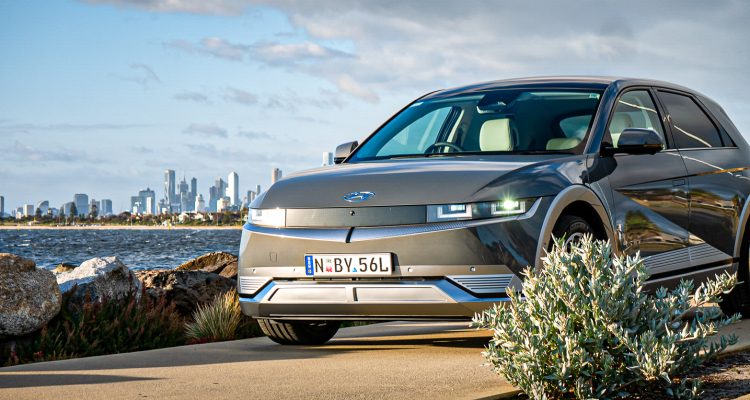
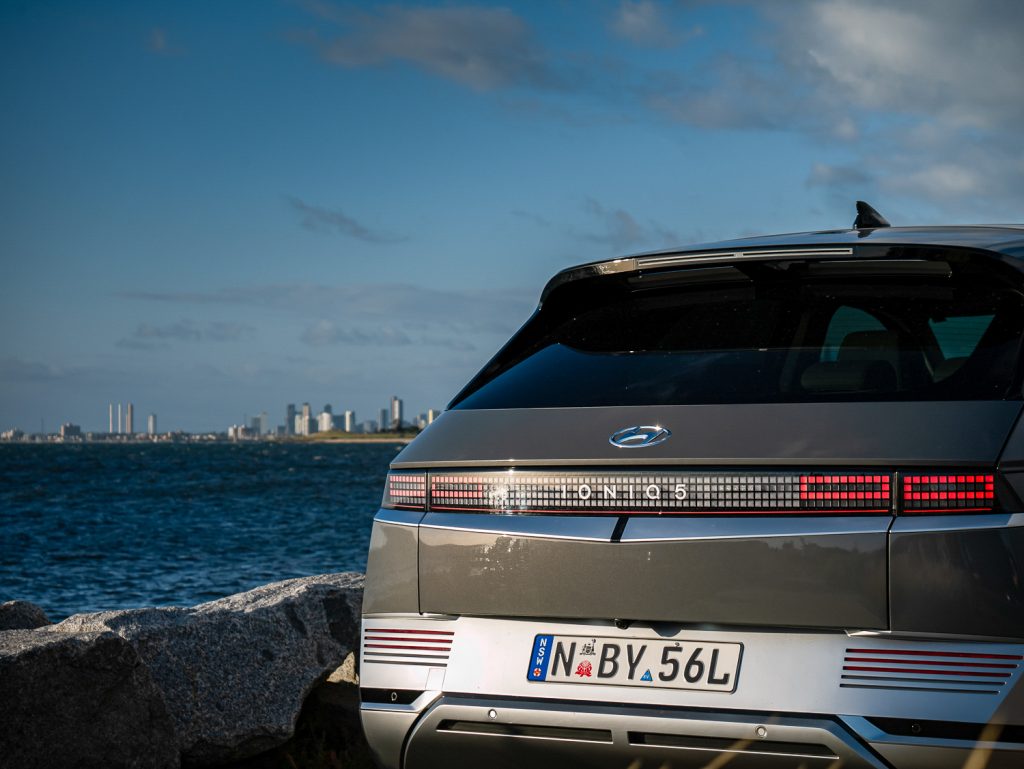
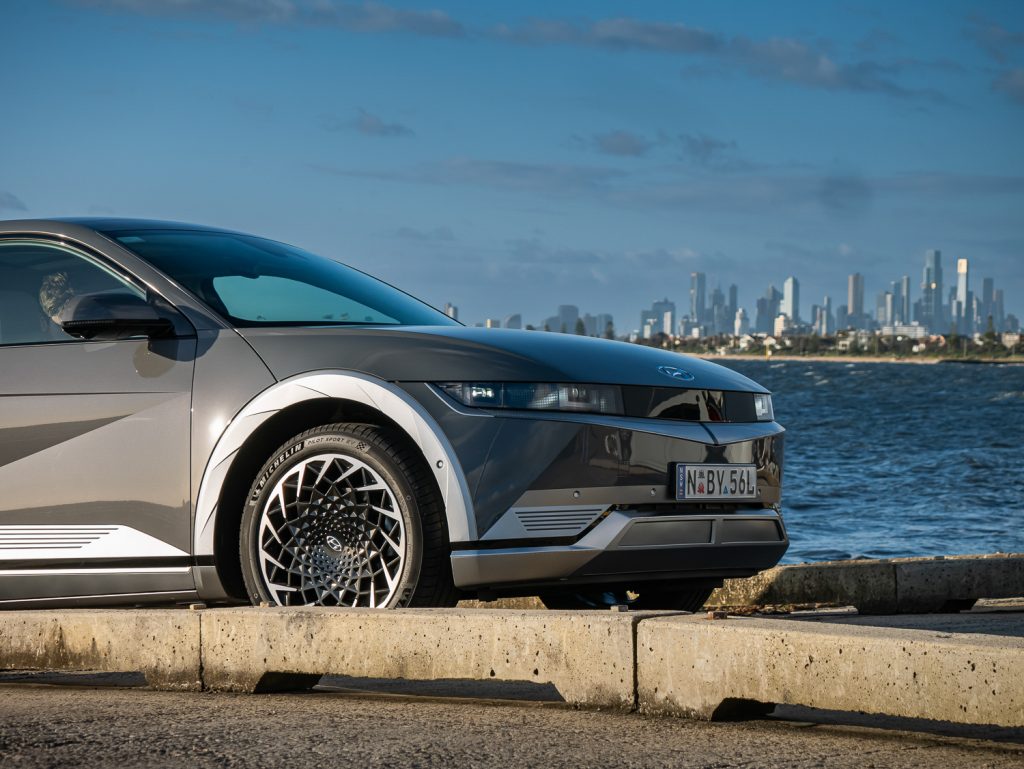
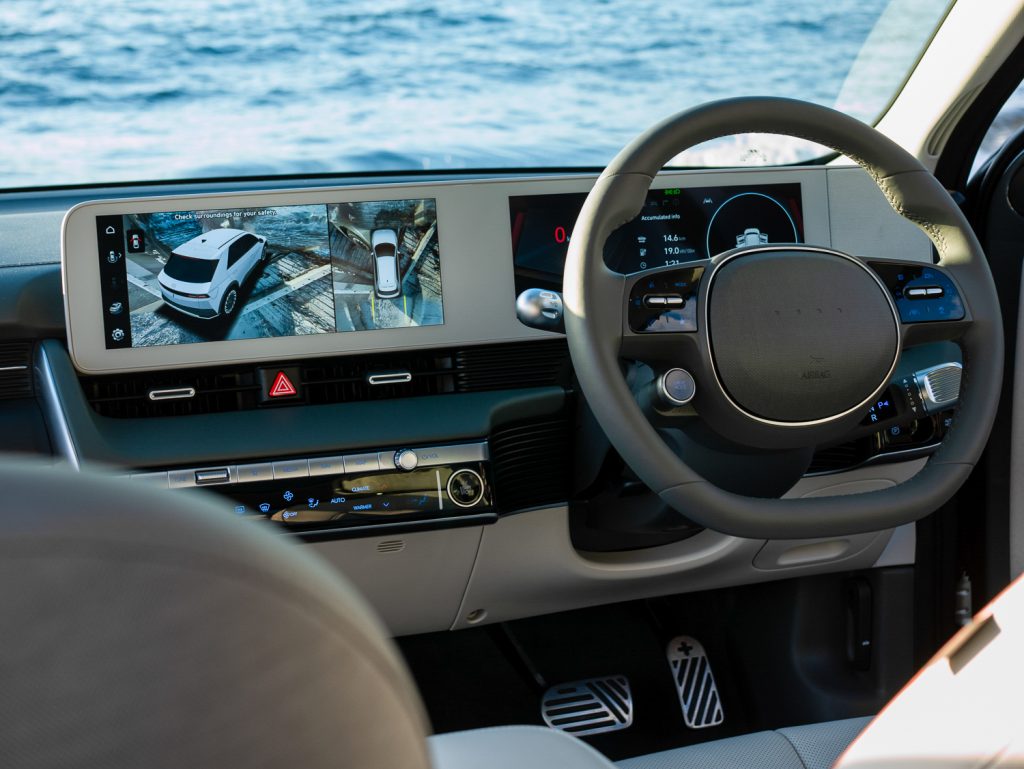
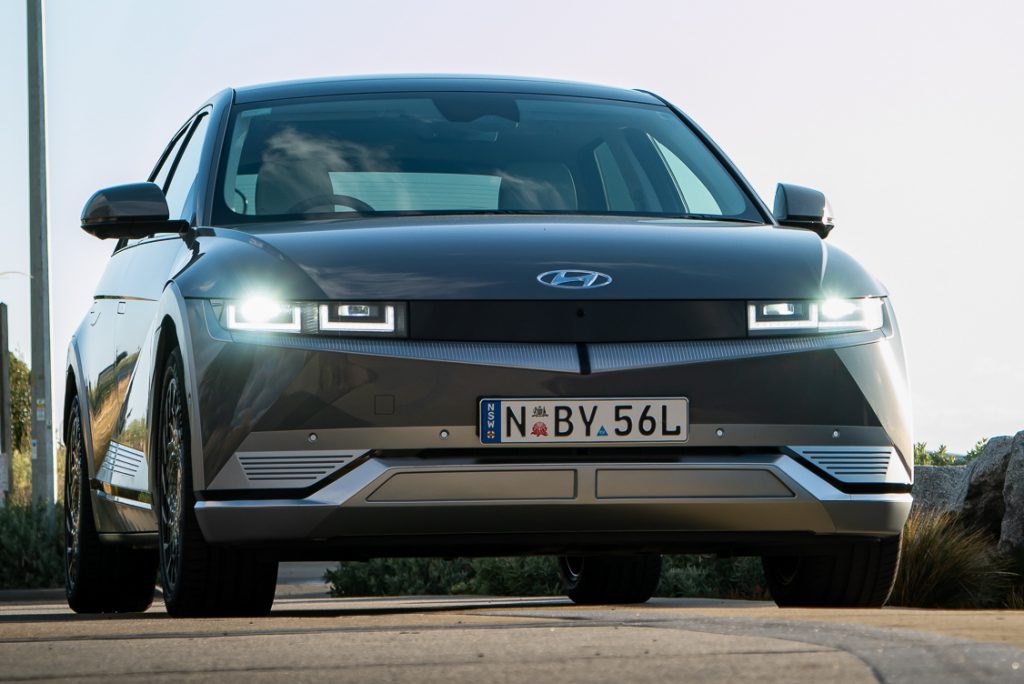
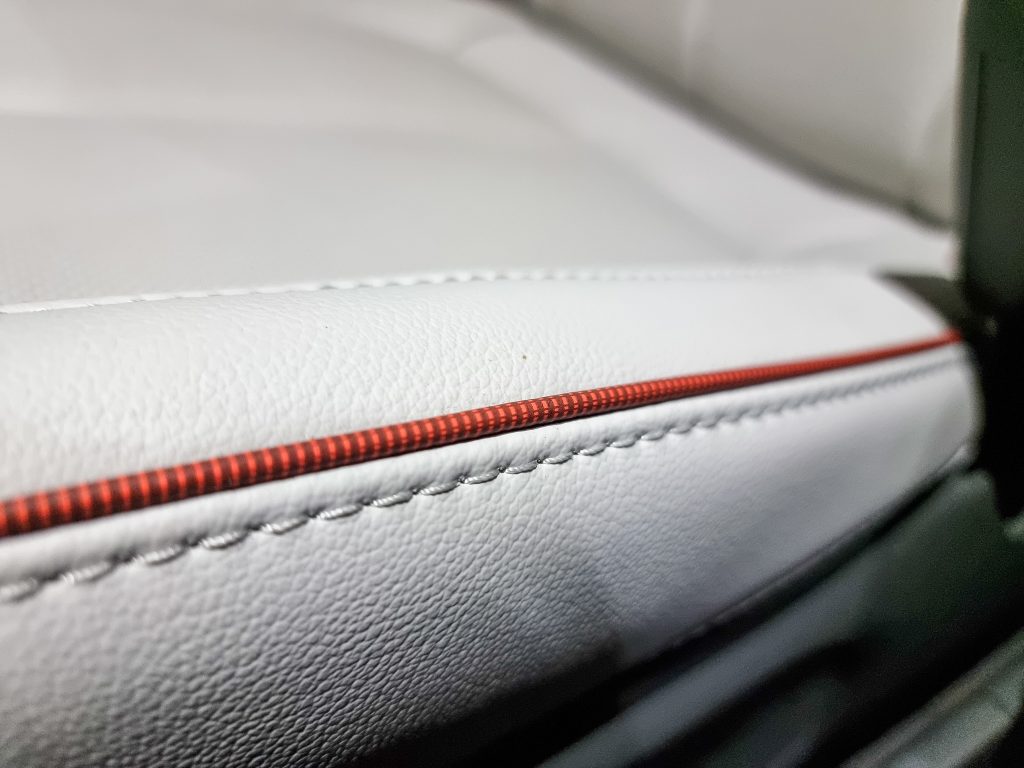
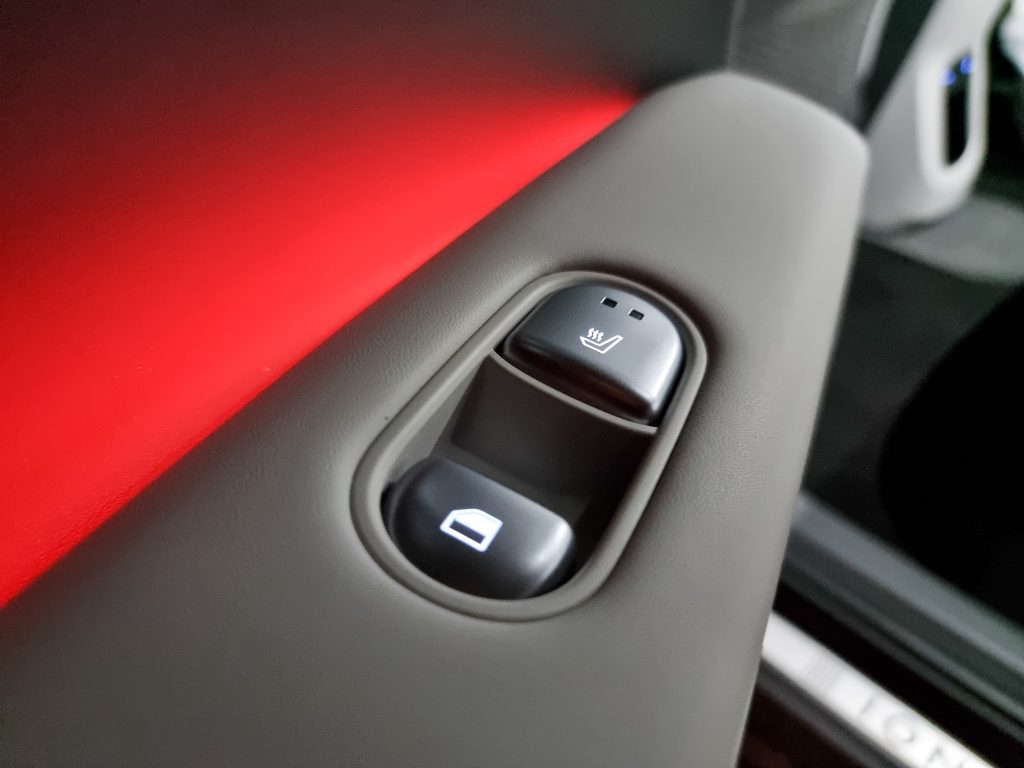
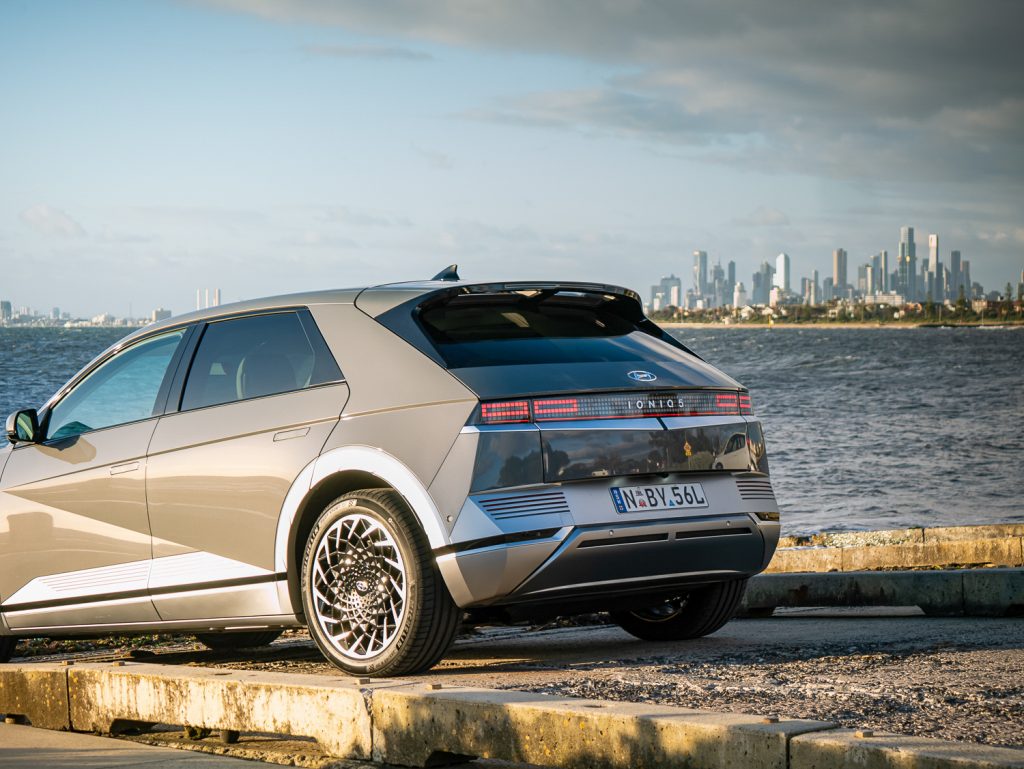
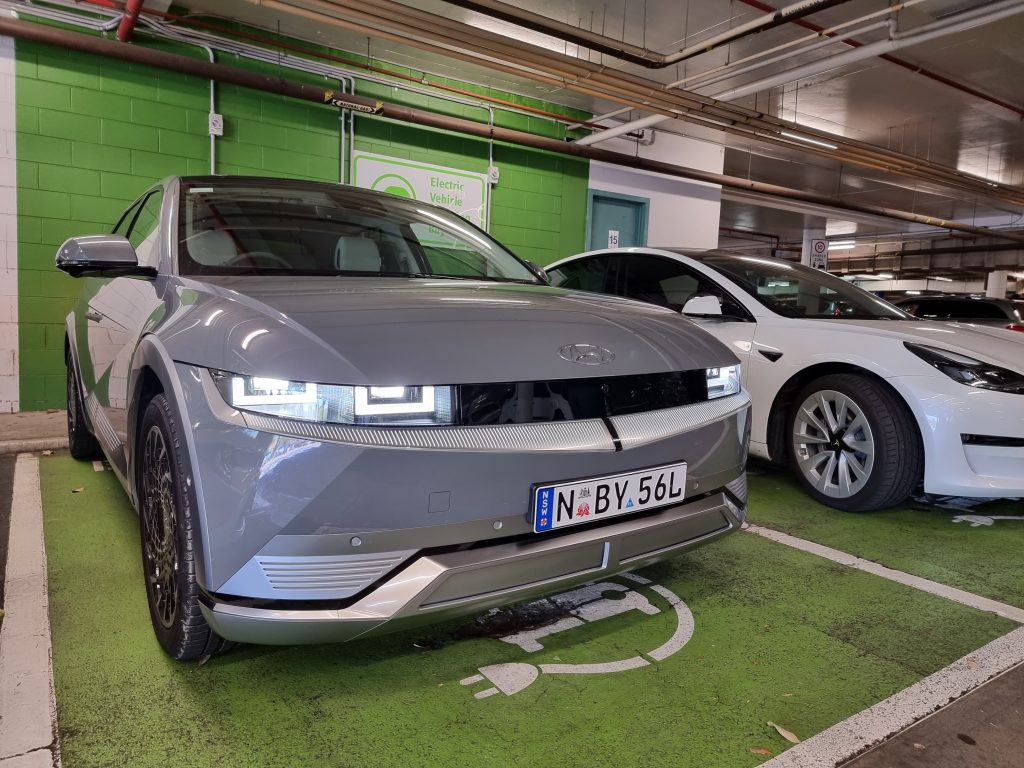
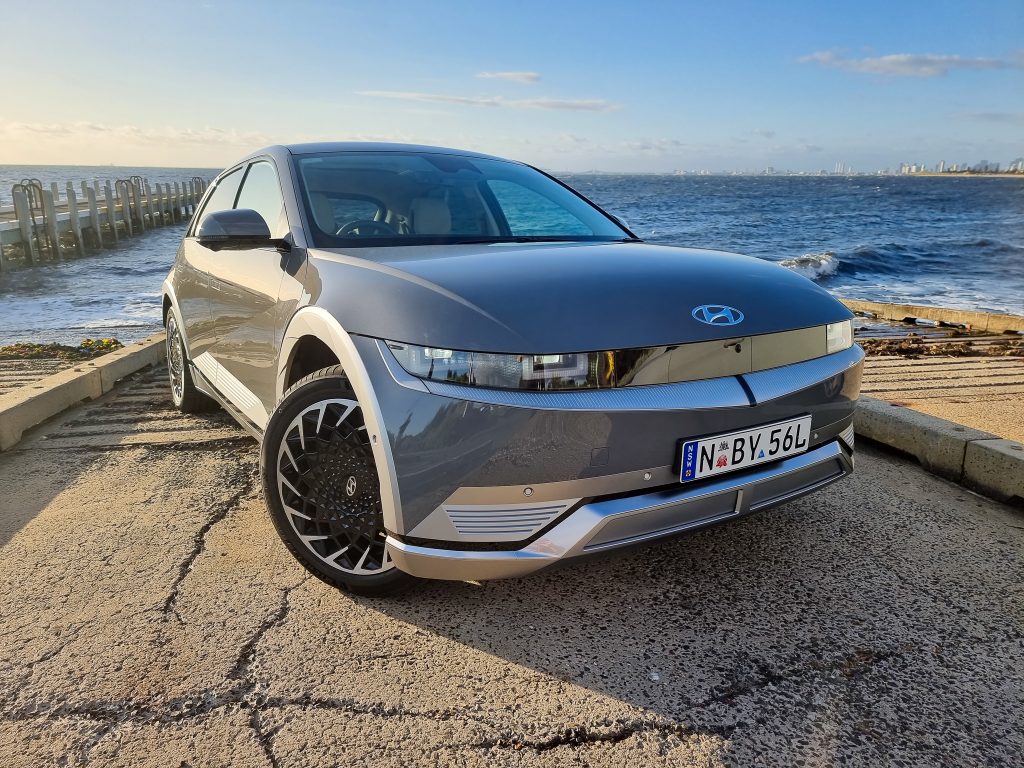
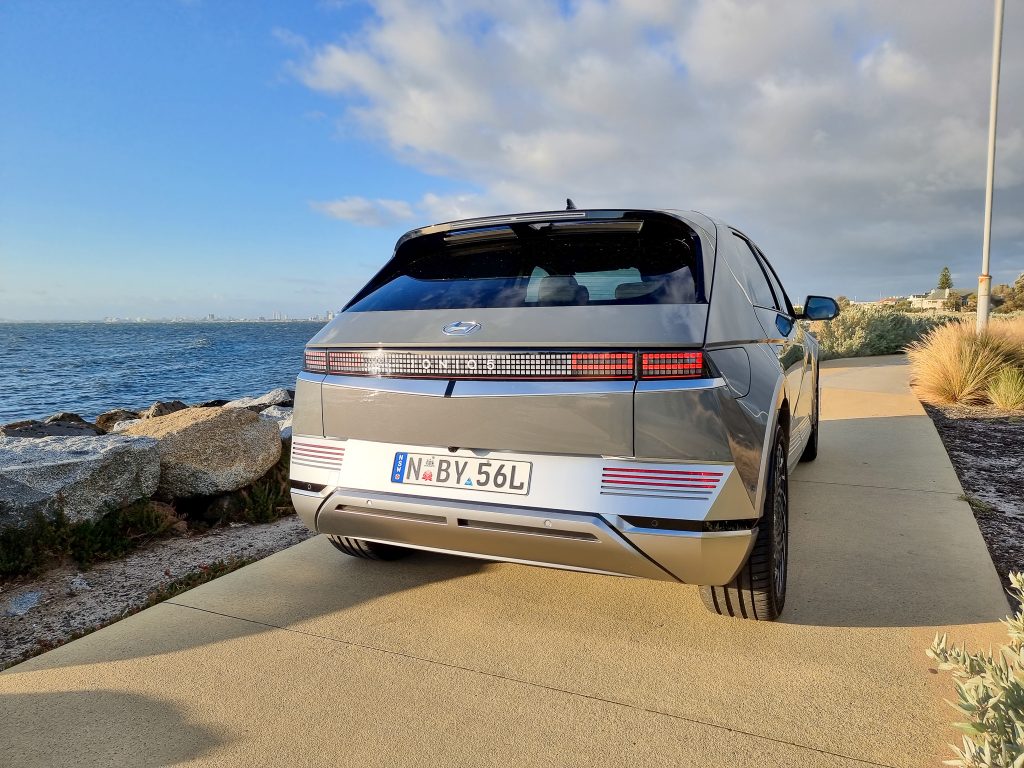
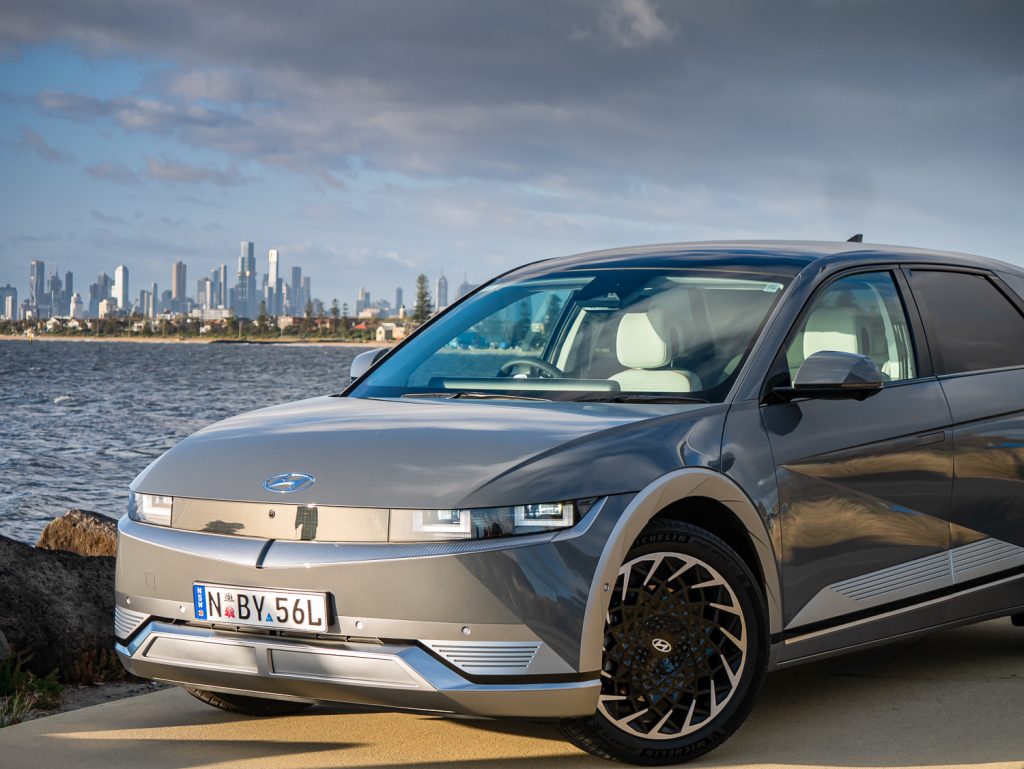
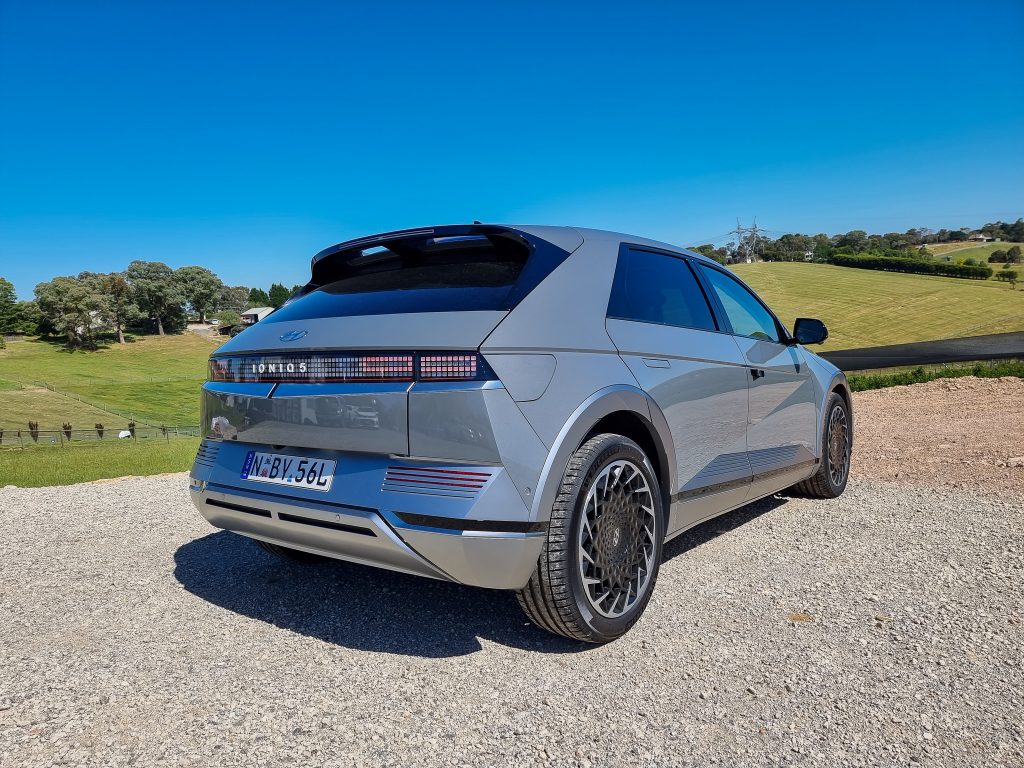
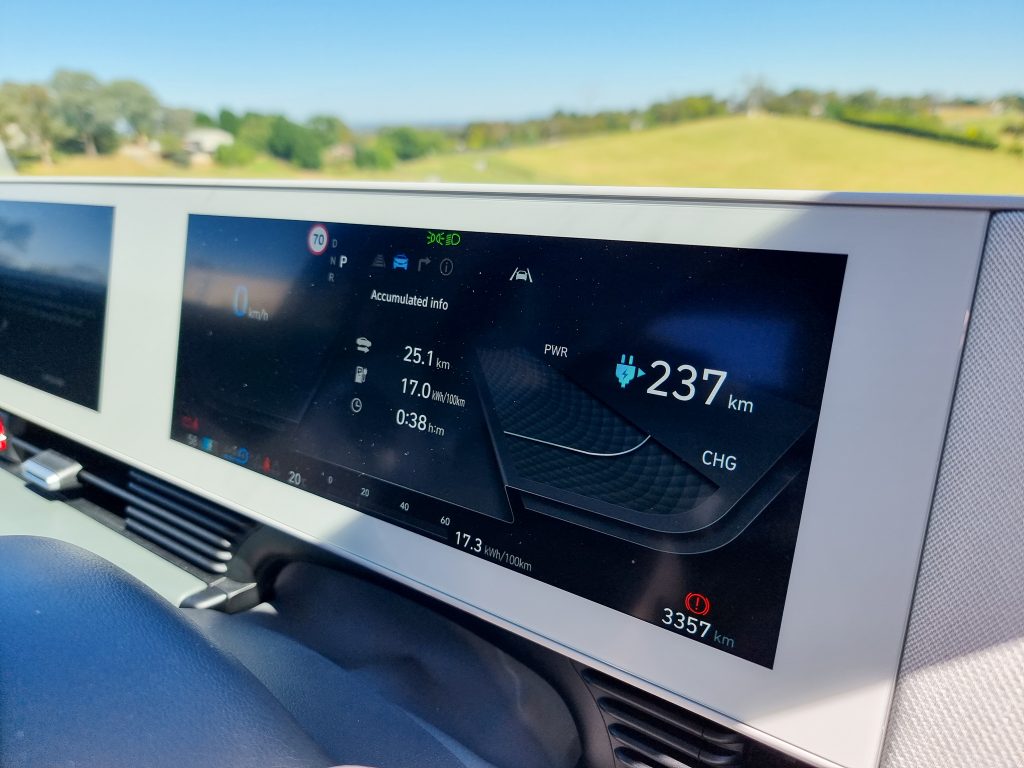
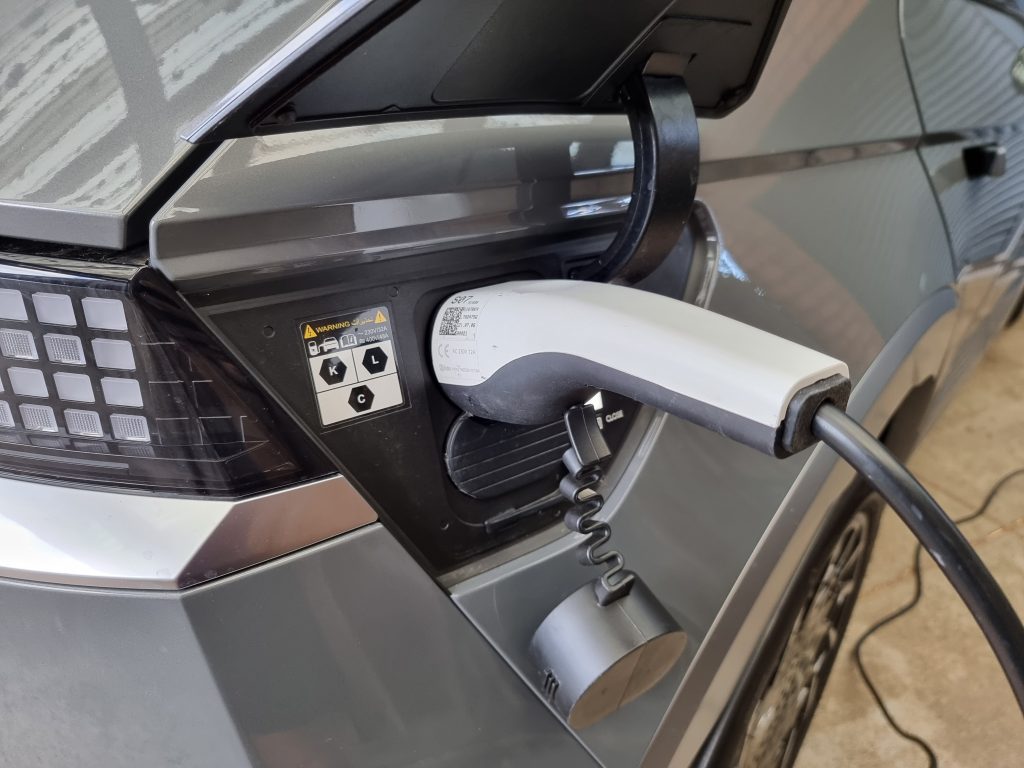
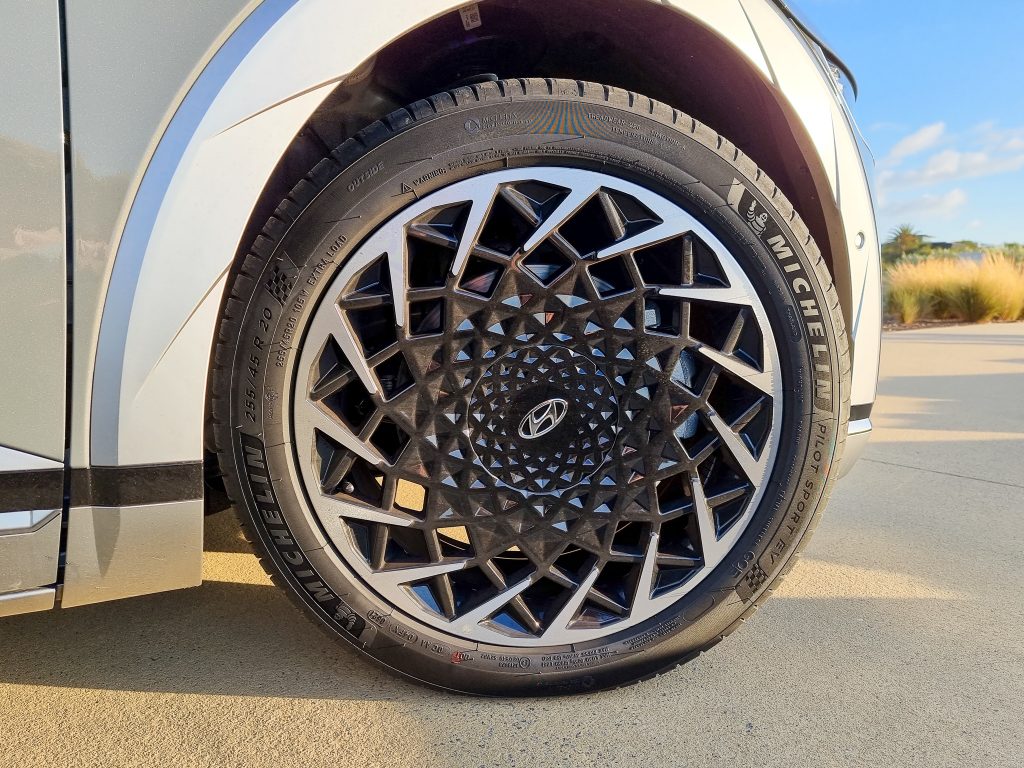
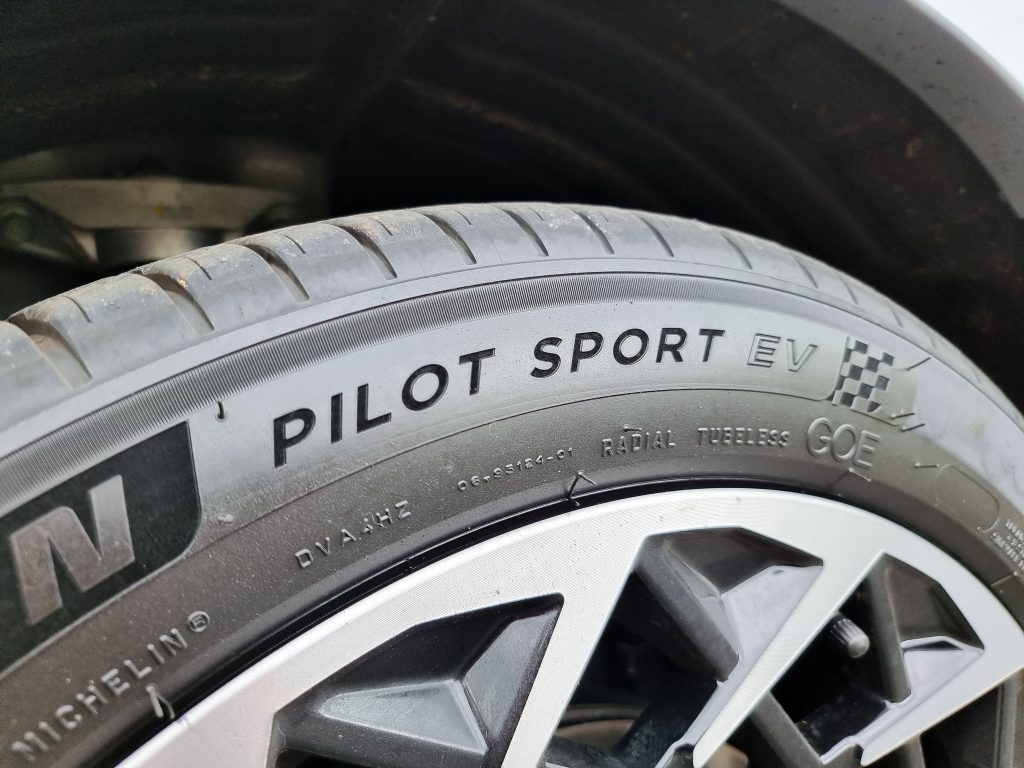
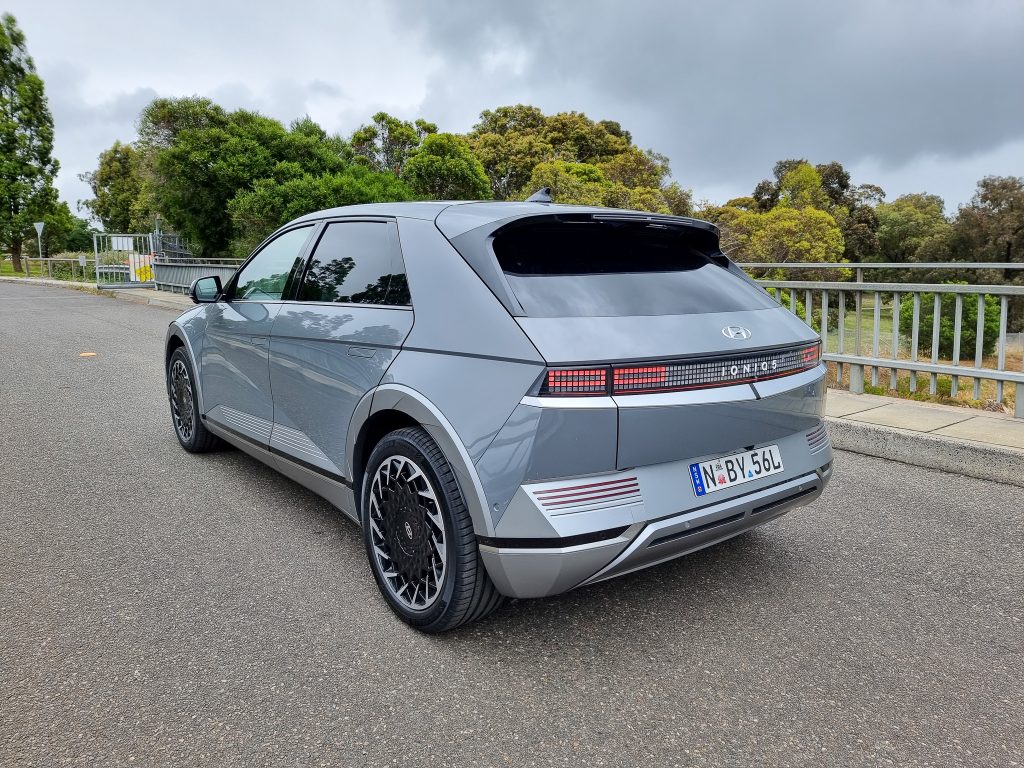
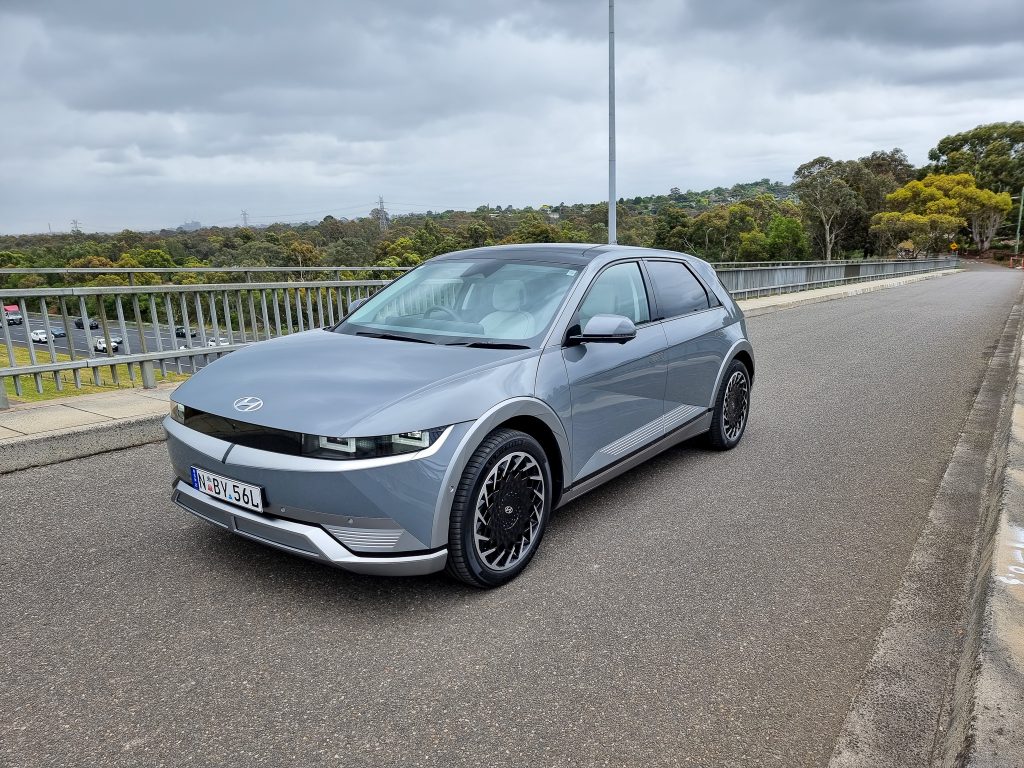
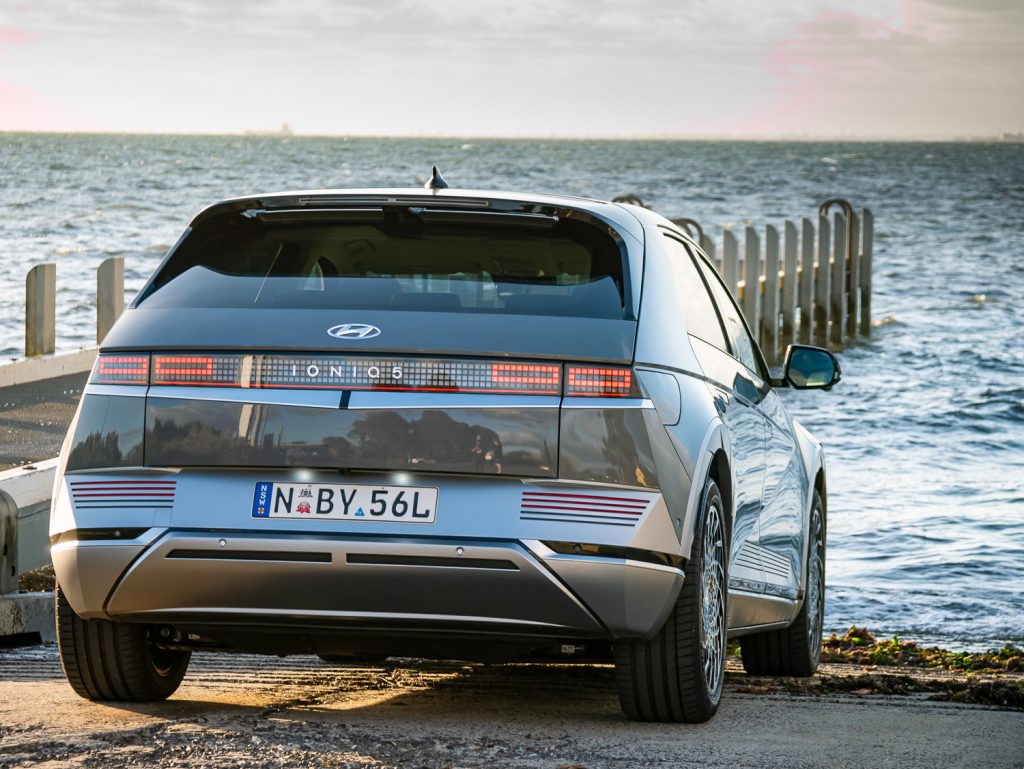
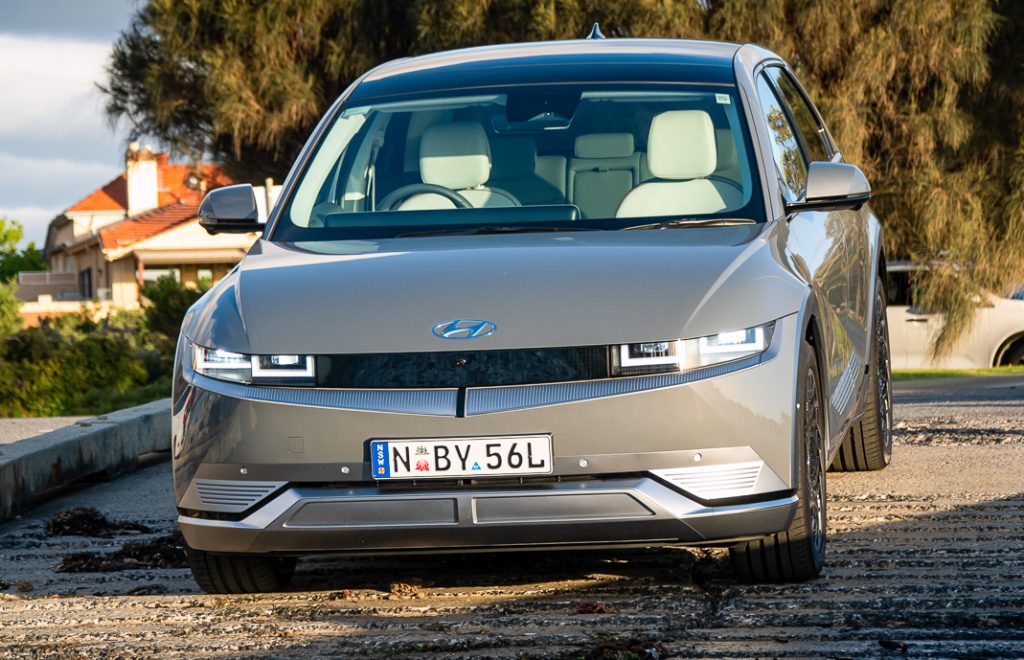
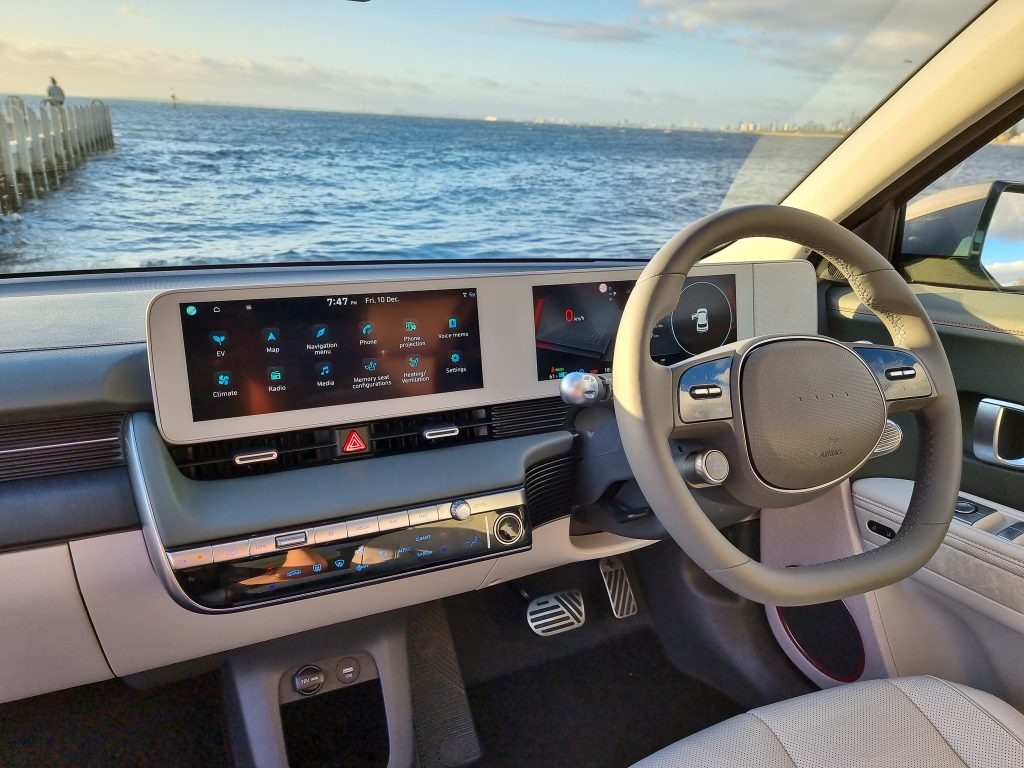
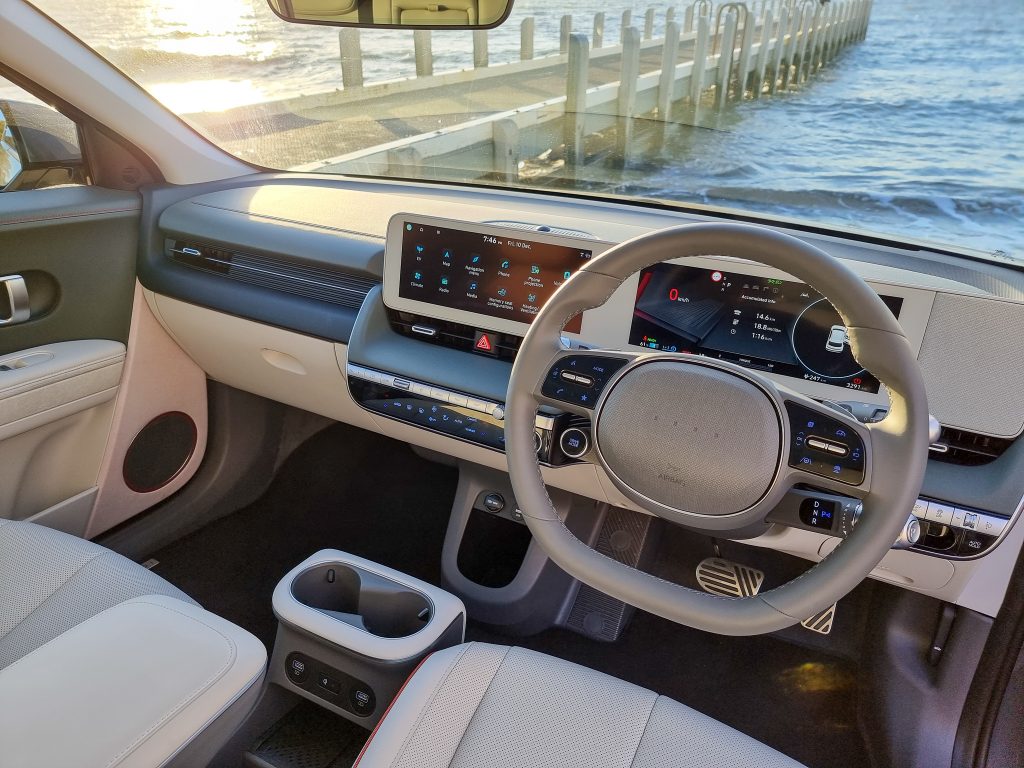
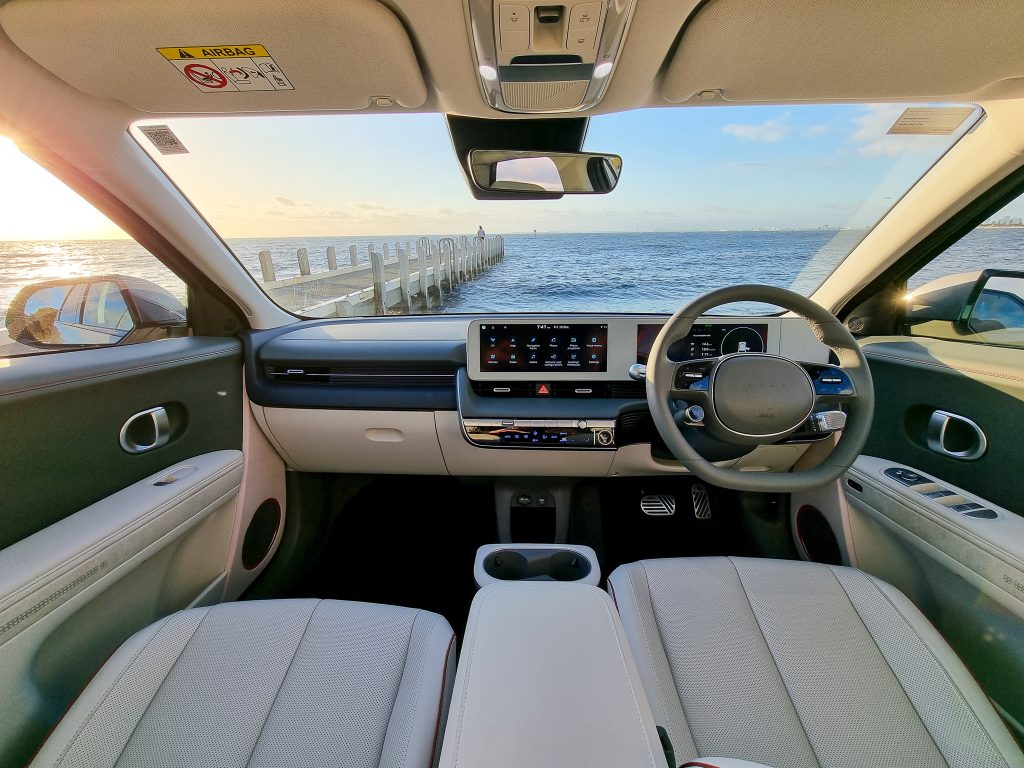
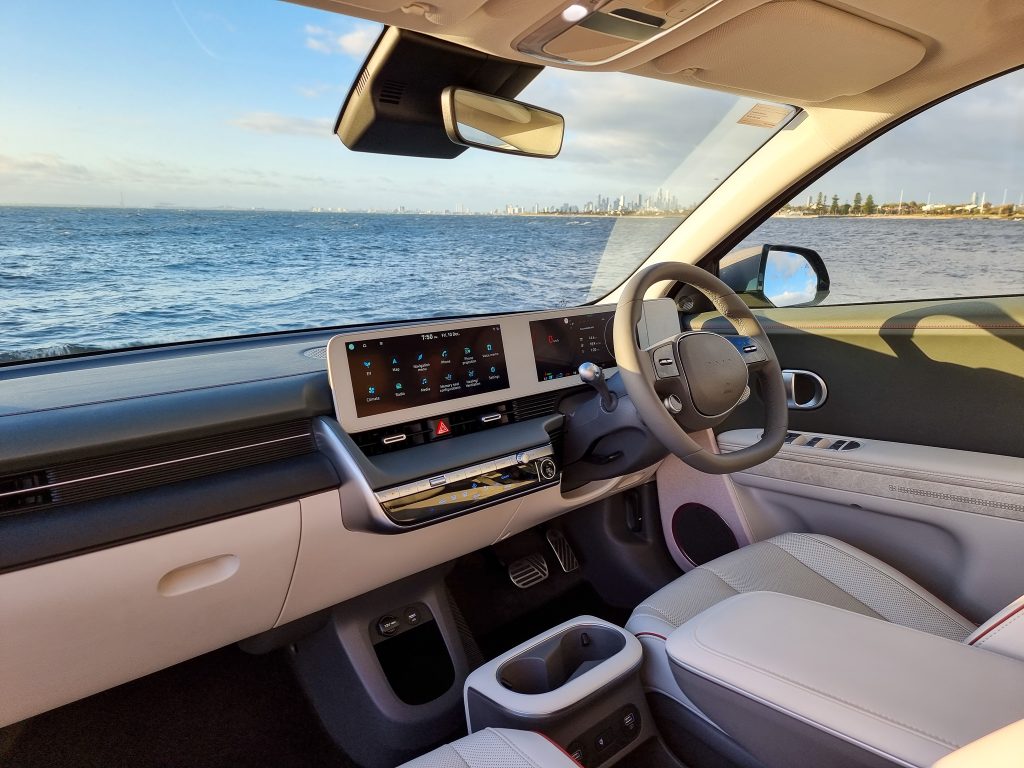
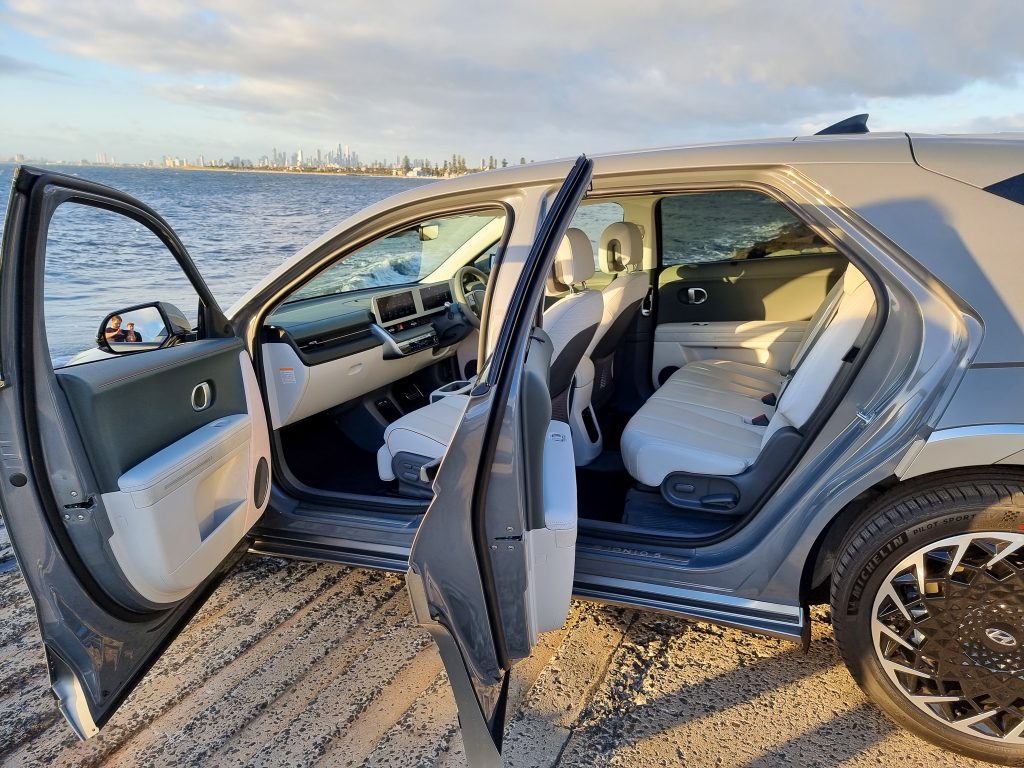
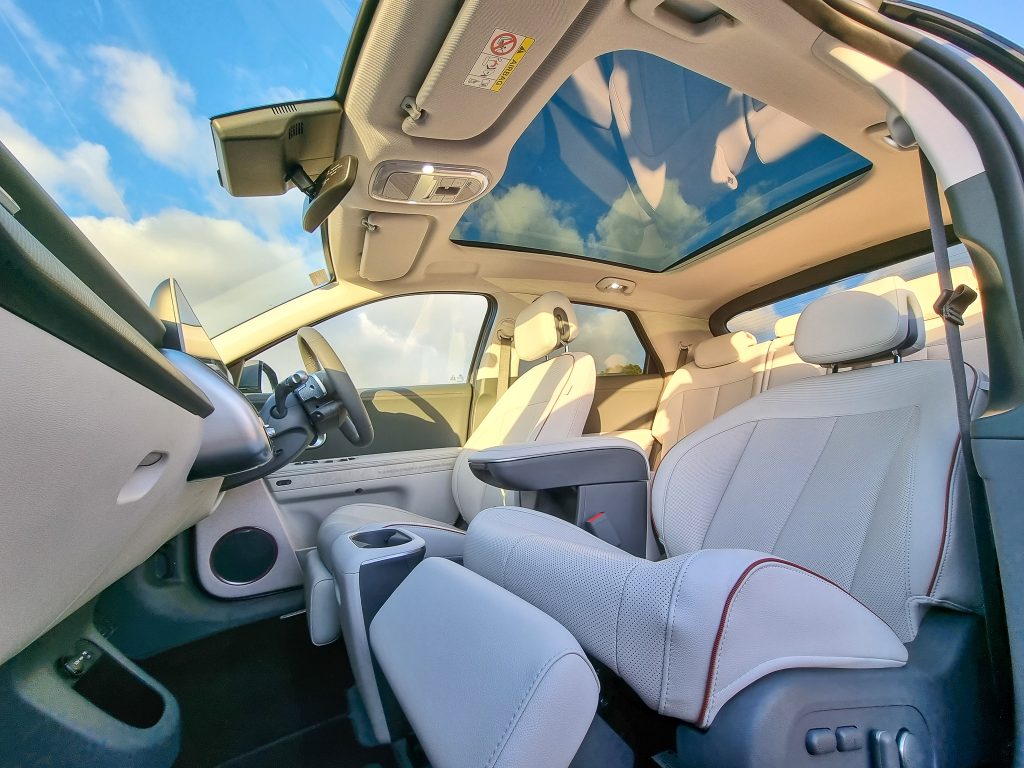
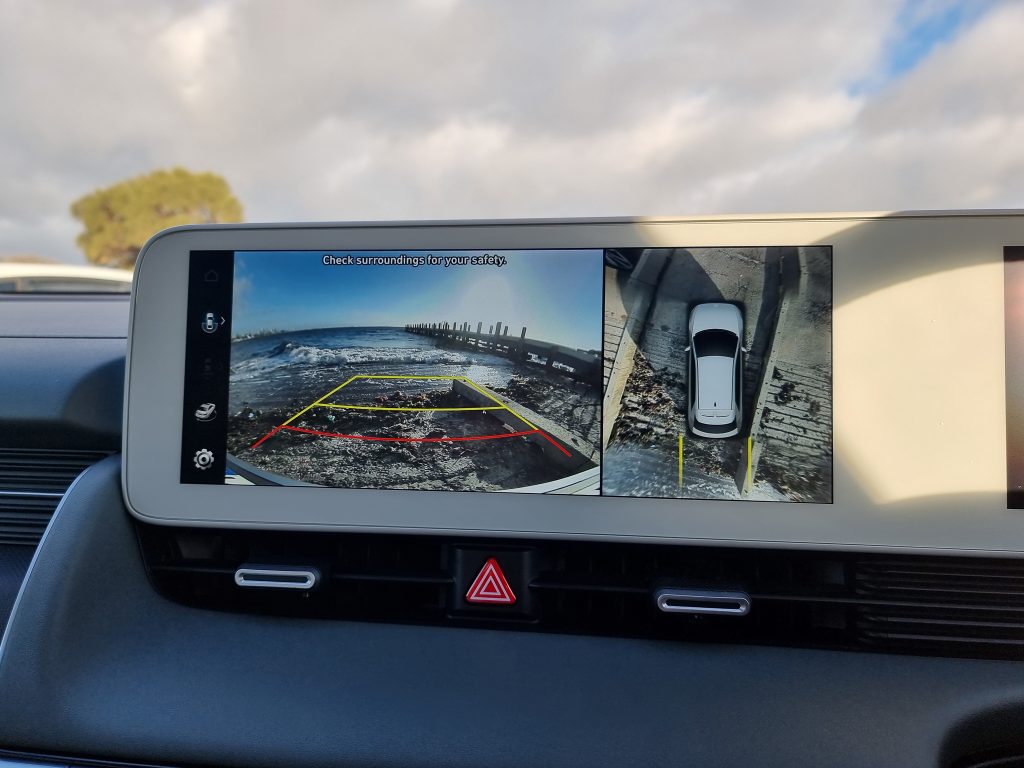
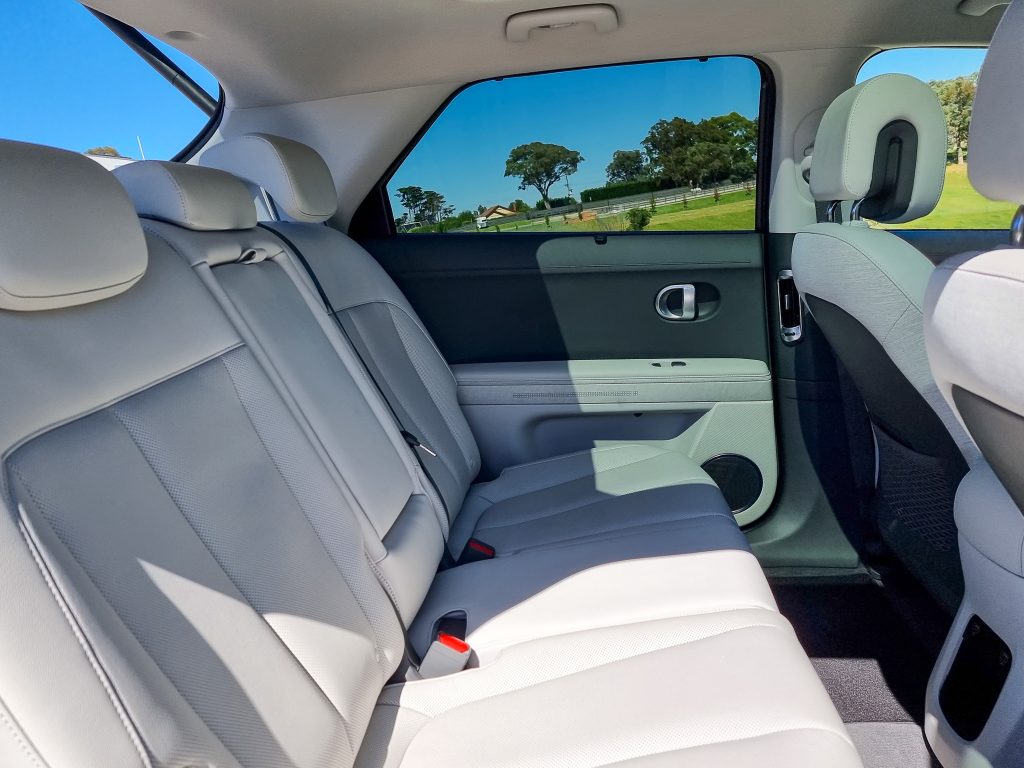
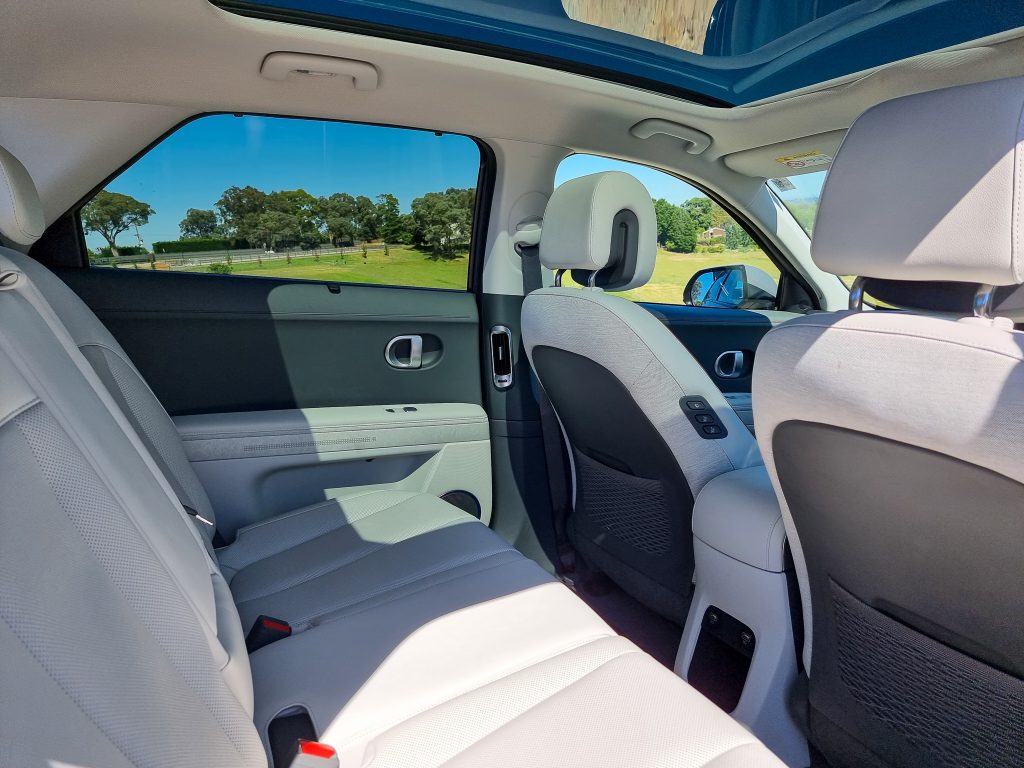
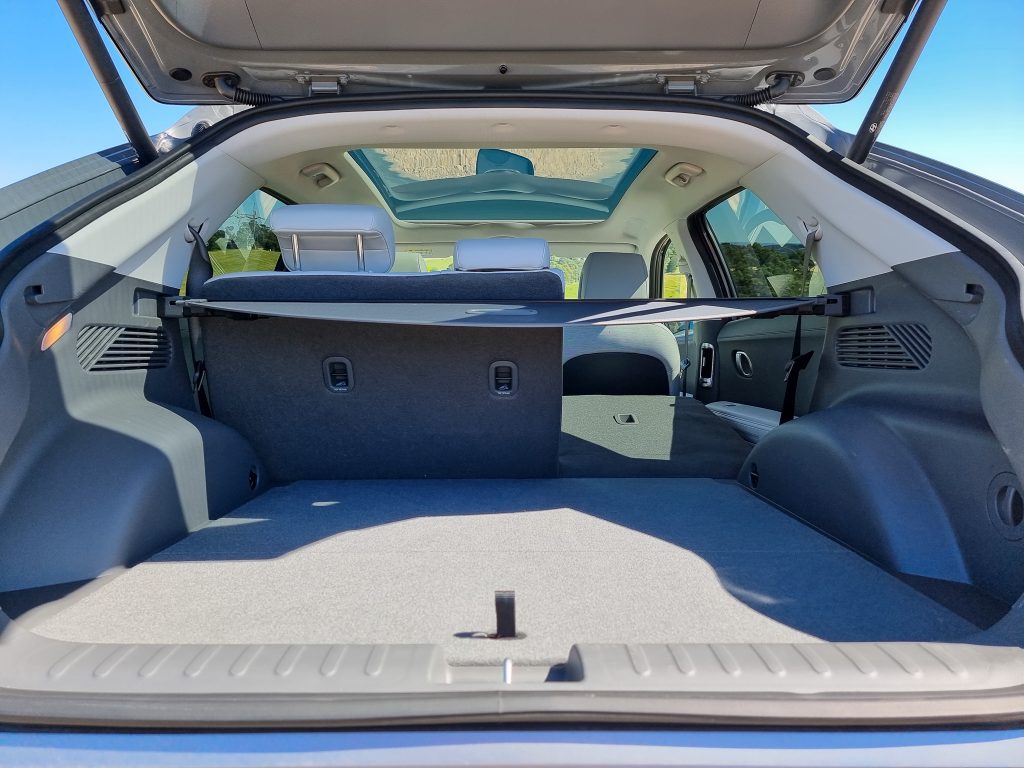
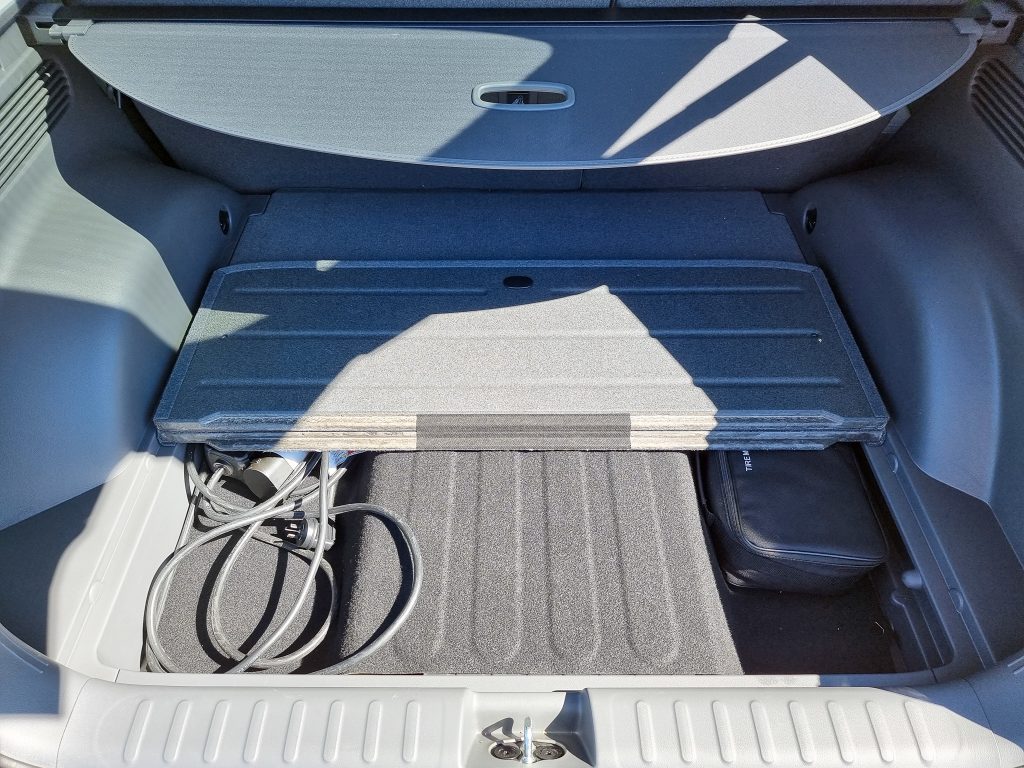
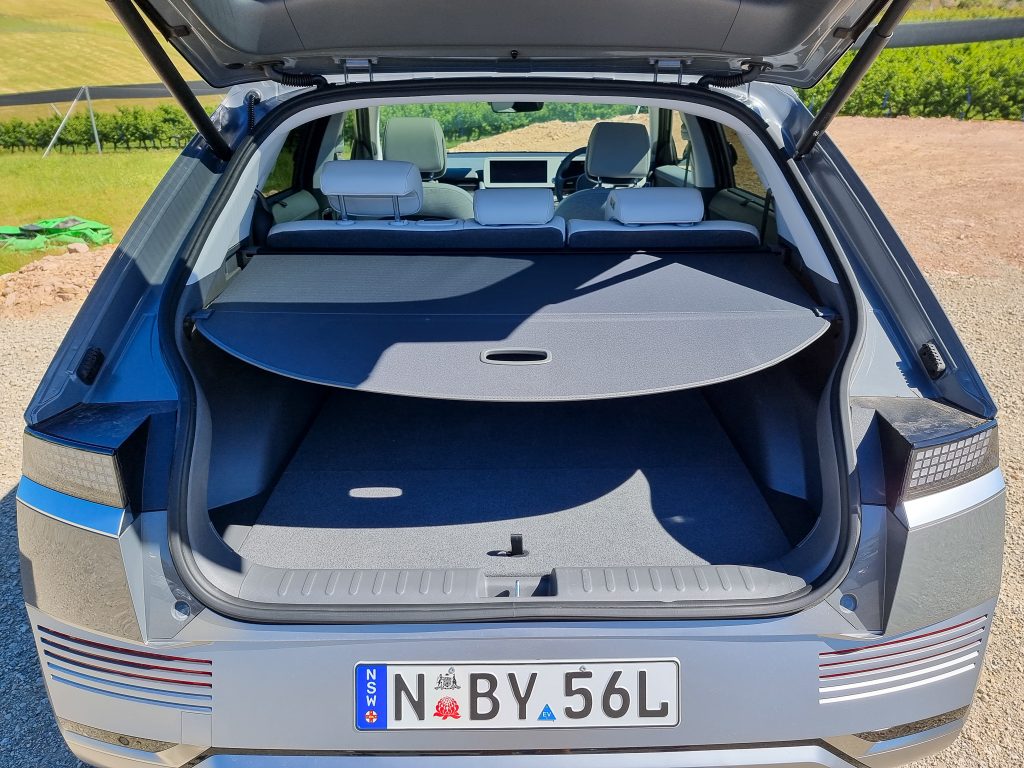
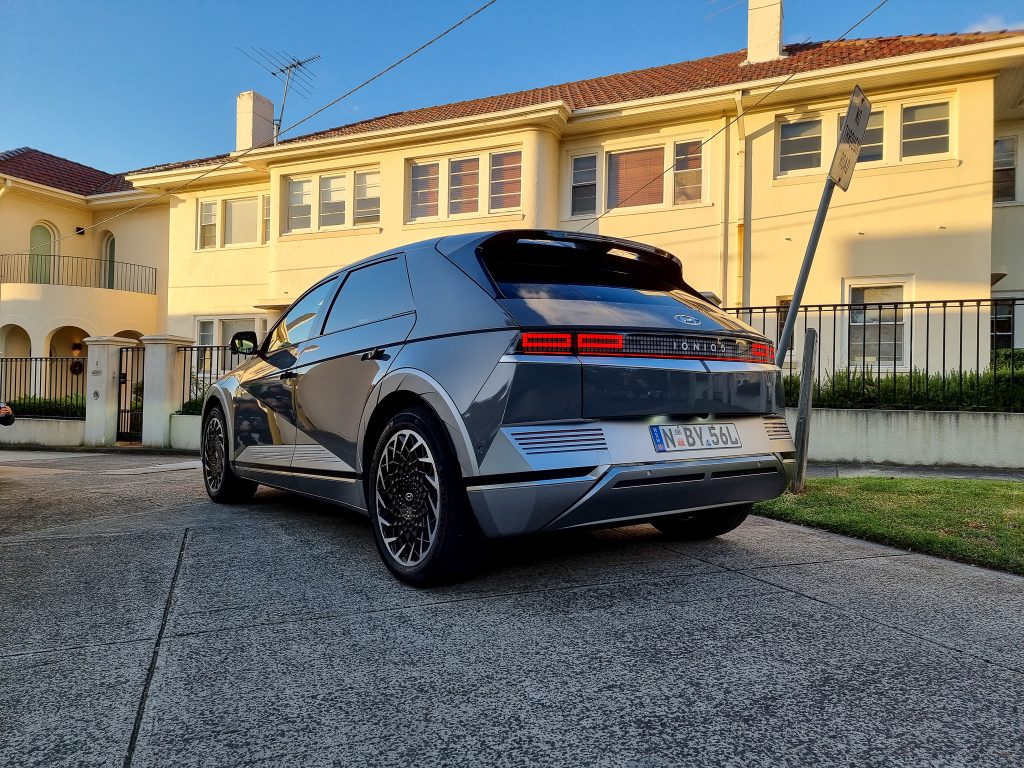
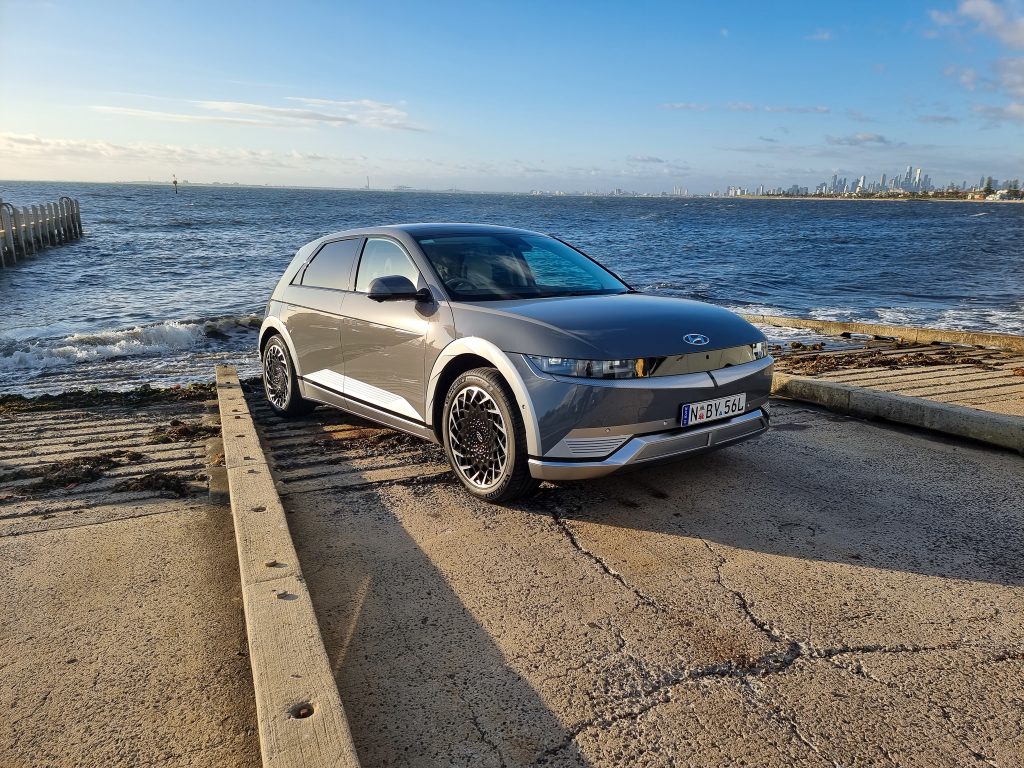

Leave a Reply